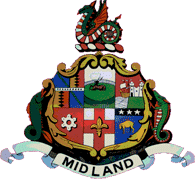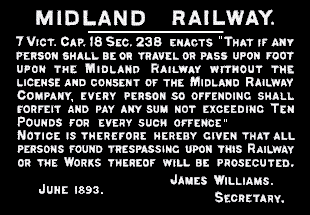
You have most likely heard of Stratford upon Avon, as in Avon River, a medieval market town in England's West Midlands. Does the name Shakespeare ring a bell? Well, in this case were not talking about that Avon River, but another with the same name. Apparently there are five Avon Rivers in England, three in Scotland, and one in Wales, who knew? The Avon we're interested in, sometimes called the Bristol Avon, lies south of Shakespeare's river and flows through Bath enroute to Bristol where it joins the Severn Estuary. It's 75 miles long and is navigable by narrowboats, or others for that matter. Everything you ever wanted to know about the Bristol Avon you can find here in Wikipedia .
.
The Avon Valley Railway, a heritage line, crosses this particular Avon River reaching end-of-track immediately south of the railway bridge over the river. The northern end of the heritage line terminates at Oldland Common three miles to the north. At one time the heritage line was part of a route connecting Bristol and Bath. This entire abandoned route is now known as the Bristol & Bath Railway Path. The path parallels the heritage line between the southern and northern end-of-track, crossing it in two places around Bitton Station, which is the heritage railway's main terminus. Excursion trains begin and end at Bitton Station.

The Midland Railway (MR) was formed in 1844 and lasted until 1922 when it became part of the London, Midland, & Scottish Railway (LMS), thereby becoming the third largest railway in Britain after the Great Western Railway (GWR), and the London & North Western Railway (LNWR).
was formed in 1844 and lasted until 1922 when it became part of the London, Midland, & Scottish Railway (LMS), thereby becoming the third largest railway in Britain after the Great Western Railway (GWR), and the London & North Western Railway (LNWR).
In 1869 it completed a branch line off its main line between Bristol and Birmingham at Mangotsfield running southwards to Bath. The line carried nine passenger trains daily when it first opened. Aside from heavy summer holiday traffic by those wishing to visit the southern coastal resorts such as Bournemouth, the branch line was not particularly successful.
By the 1950s traffic had decreased to providing a basic stopping train service between Bath and Bristol. Generally the branch suffered from poor loadings and high operating costs until 1966 when the Beeching Axe fell. This was the cessation of passenger services but some coal loads continued to be shipped to a Bath gas works until 1971.
fell. This was the cessation of passenger services but some coal loads continued to be shipped to a Bath gas works until 1971.

Following closure the branch was turned into a footpath and cycling route named the Bristol and Bath Railway Path. This paved pathway now connects Bristol to Bath over the abandoned right-of-way, a distance of 15 miles, carrying over 2.4 million trips according to some twelve-year-old data. The 3 mile long heritage Avon Valley Railway lies near the middle of this abandoned branch line pathway.
The present Avon Valley Railway began when the Bristol Suburban Railway Society leased the Bitton Station yard from the British Railways Board. By 1979 the Bristol Suburban Railway Society was incorporated as the Bitton Railway Company Ltd. Over the years vandalized buildings were repaired and track laid north reaching Oldland Common in 1988. Train rides commenced with a steam hauled brake van which eventually evolved into restored 1950s British Railways Mark 1 carriages. By 1992 due to expansion of Bristol housing it became apparent the line could not be extended further north, so the restorers turned south, laying track to Avon Valley Country Park where a new platform was completed just south of the Avon River in 2004. In the future it's intended to continue restoring the line southeast towards Newbridge on the outskirts of Bath.
There was only one locomotive operating during September 2019, 0-6-0ST Austerity WD 132 "Sapper", which pulled and pushed the regular public passenger train from Bitton, to Oldland Common, to end-of-track by the Avon River, to Bitton, then repeated that several times during the day.
| Number: WD 132 Name: Sapper Type: 0-6-0ST Switcher Builder: Hunslet Engine Company. Built: 1944 Pressure: 170 pounds per square inch Superheater: None Cylinders: 18 x 26 inches |
 of steam and diesel locomotives plus rolling stock at the Avon Valley Railway website.
of steam and diesel locomotives plus rolling stock at the Avon Valley Railway website.